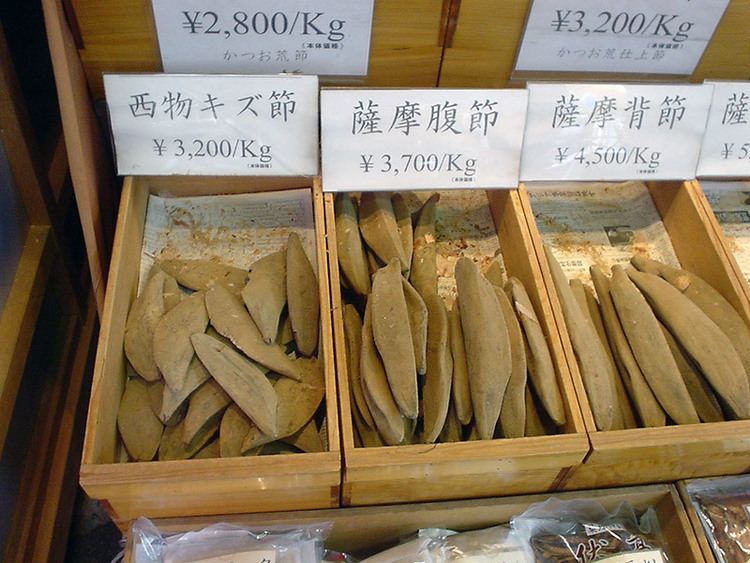 | ||
Similar Skipjack tuna, Dashi, Kombu, Mirin, Okonomiyaki | ||
Katsuobushi (Japanese: 鰹節) is dried, fermented, and smoked skipjack tuna (Katsuwonus pelamis). It is also known as Bonito flakes when young bonito is used as a cheaper substitute for skipjack tuna. Katsuobushi or similarly prepared fish is also known as okaka (おかか).
Contents
- Katsuobushi bonito shaver
- Traditional production process
- Shaving
- Uses
- Health
- In popular culture
- References

Shaved Katsuobushi and dried kelp - kombu - are the main ingredients of dashi, a broth that forms the basis of many soups (such as miso) and sauces (e.g., soba no tsukejiru) in Japanese cuisine.
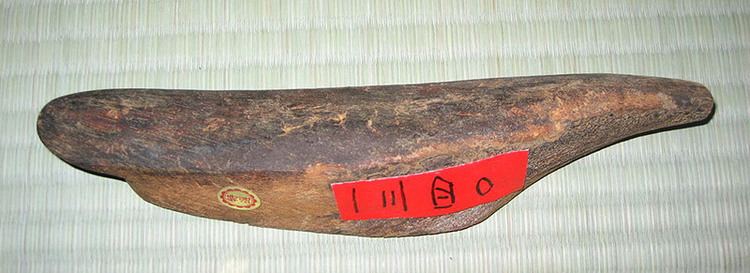
Katsuobushi's distinct umami taste comes from its high inosinic acid content. Traditionally made katsuobushi, known as karebushi, is deliberately planted with Aspergillus glaucus fungus in order to reduce moisture. Katsuobushi has also been shown to impart a kokumi flavour.
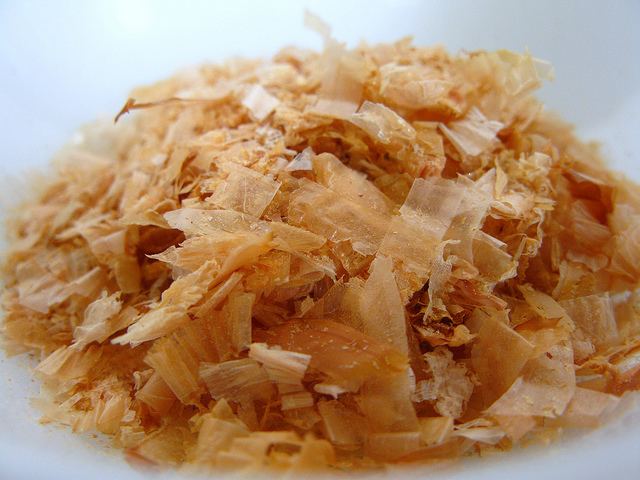
Upon being placed on hot food, the heat waves cause the thin and light katsuobushi to move about, giving it a special aesthetic look. It is placed on pizzas to make the top of the pizza seem alive with the "dancing" katsuobushi.

Katsuobushi bonito shaver
Traditional production process
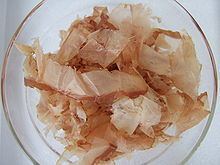
The fish is beheaded, gutted and filleted. The fatty belly area does not lend well to being preserved, so it is also trimmed off. The fillets are then arranged in a basket and simmered just below boiling for an hour to an hour and a half, depending on the size of the fillets. The rib bones are removed after the fillets have been boiled.
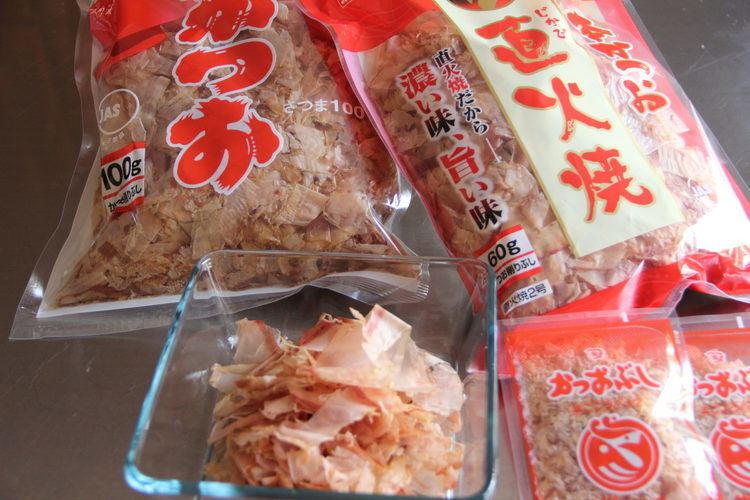
The fillets are then smoked using oak, pasania, or castanopsis wood; this process can take up to a month. They are smoked for 5–6 hours in one session, left to rest for one day for the condensation to rise to the surface, then fired and smoked again the next day, repeating this smoking and resting cycle 12–15 times. The built up tar from the smoke is cleaned from the surface using a grinder. At this stage the fillets are called aragatsuo (荒節) and most commonly found in stores shaved and packaged for sale under the name katsuo-kezuri-bushi (鰹削り節) or hanakatsuo — they are not true katsuobushi without the last fermentation stage, but still valued as a good substitute.
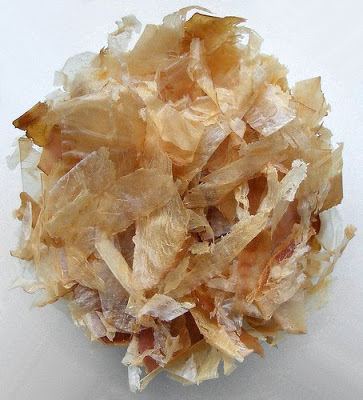
The last stage of creating a katsuobushi is to allow the fish to sun-dry using the assistance of mold. The fillets are sprayed with Aspergillus glaucus culture and left for 2 weeks in a closed cultivation room. The mold ferments the fillets and also siphons out any residual moisture.
The mold is continually scraped off, with further sun-drying of the fish increasing hardness and dryness until it resembles a piece of wood, with less than 20% of its original weight. By definition, only fillets that have been treated in this manner may be referred to as a katsuobushi. However, after repeating this process of mold growth and sun-drying at least twice, the katsuobushi can also be called karebushi (枯節, "dried fillet"), and fillets repeating this process more than three times can be called honkarebushi (本枯節, "true dried fillet"). When tapped together lightly, they sound almost metallic, and unlike their dull beige outer appearance, when broken open they are a translucent deep ruby color inside. Rarely, very high-end honkarebushi repeat this drying process for over two years.
In the Edo era, it was common for katsuobushi to be produced using the so-called tebiyama style (手火山式, tebiyama-shiki). This increases the whole production process by one step, but results in the end product having much more flavour and taste, and minimizes deterioration of the raw material. There are only a few factories left in the world who have adapted this style and are still using it to this day due to extra costs and facilitation requirements. The tebiyama style production process takes place after the fillets are boiled and its rib bones removed. The process includes the fillets being put in a steaming basket stacked on top of each other for one to two hours a few meters above a burning fire of firewood. The baskets are then shuffled every once in a while to make for an equal amount of exposure to the smoke.
Shaving
Traditionally, large chunks of katsuobushi were kept at hand and shaved when needed with an instrument called a katsuobushi kezuriki, similar to a wood plane.
Katsuobushi is today typically found in bags of small pink-brown shavings. Smaller, thinner shavings, called hanakatsuo (花鰹; はなかつお), are used as a flavoring and topping for many Japanese dishes, such as okonomiyaki. Larger, thicker shavings, called kezurikatsuo (削り鰹; けずりかつお), are used to make the ubiquitous dashi stock.
Uses
In addition to making dashi, other popular uses of katsuobushi include:
Health
The mycotoxin beta-nitropropionic acid has been found on katsuobushi as well as miso and soy sauce, two other Japanese fungal fermented products. Certain strains of A. glaucus are reported to produce mycotoxins.
Due to the smoking process which involves tar and charcoal, amounts of Benzopyrene exceeding EU standards, as much as 37μg per kilogram, have been detected in commercially sold katsuobushi. As a result, they have been once banned for sales in the European Union.
In popular culture
The title of John Lennon's 1975 compilation album Shaved Fish refers to katsuobushi.
